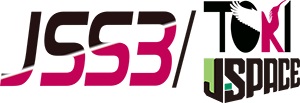Boundary Layer Flow Control Technologies
JAXA Supercomputer System Annual Report February 2022-January 2023
Report Number: R22EDA201A01
Subject Category: Aeronautical Technology
- Responsible Representative: Dongyoun Kwak, Hub Manager, Aviation Environmental Sustainability Innovation Hub, Aviation Technology Directorate
- Contact Information: Yasushi Ito, Aviation Environmental Sustainability Innovation Hub, Aeronautical Technology Directorate(ito.yasushi@jaxa.jp)
- Members: Yasushi Ito, Shunsuke Koike, Yoimi Kojima, Takahiro Uchiyama, Takahiro Yamamoto, Kuniyuki Takekawa, Kentaro Tanaka
Abstract
Vortex generators (VGs) are often applied to an aircraft to resolve issues that require performance improvement during a flight test phase, and their size and installation locations are often determined by trial and error in flight tests. The objective of this research is to improve the current VG layout and design technology, so that it can be incorporated into aerodynamic design that actively utilizes VGs from a conceptual design phase.
Reference URL
Please refer to http://www.aero.jaxa.jp/eng/research/basic/application/ .
Reasons and benefits of using JAXA Supercomputer System
Computational simulations using the JSS reveal detailed physical phenomena of VGs, which are not able to be obtained only with wind tunnel tests, and enable to improve the design of VGs.
Achievements of the Year
To investigate Reynolds-averaged Navier-Stokes technologies required to predict the effect of VGs installed on a trailing-edge flap of a high-lift wing for the suppression of boundary layer separation, a two-dimensional infinite wing was chosen until last fiscal year because high-resolution meshes were able to be used. Mesh generation guidelines elaborated through this research for predicting the effect of VGs have been applied to the JAXA high-lift research wind tunnel model, OTOMO2, as a representative of a three-dimensional model. It was confirmed that the mesh generation guidelines were also useful for the OTOMO2 both in wind tunnel conditions and assumed flight conditions (Figure 1).

Fig.1: Differences of surface streamlines, surface skin friction distributions and total pressure distributions on a cross-section through the flap with (right) and without (left) VGs on the flap in a flight condition
Publications
N/A
Usage of JSS
Computational Information
- Process Parallelization Methods: MPI
- Thread Parallelization Methods: Automatic Parallelization
- Number of Processes: 324
- Elapsed Time per Case: 180 Hour(s)
JSS3 Resources Used
Fraction of Usage in Total Resources*1(%): 1.91
Details
Please refer to System Configuration of JSS3 for the system configuration and major specifications of JSS3.
| System Name | CPU Resources Used(Core x Hours) | Fraction of Usage*2(%) |
|---|---|---|
| TOKI-SORA | 51316559.27 | 2.24 |
| TOKI-ST | 8919.87 | 0.01 |
| TOKI-GP | 0.00 | 0.00 |
| TOKI-XM | 13250.77 | 8.29 |
| TOKI-LM | 2240.31 | 0.15 |
| TOKI-TST | 0.00 | 0.00 |
| TOKI-TGP | 0.00 | 0.00 |
| TOKI-TLM | 0.00 | 0.00 |
| File System Name | Storage Assigned(GiB) | Fraction of Usage*2(%) |
|---|---|---|
| /home | 94.85 | 0.09 |
| /data and /data2 | 15375.93 | 0.12 |
| /ssd | 1214.08 | 0.17 |
| Archiver Name | Storage Used(TiB) | Fraction of Usage*2(%) |
|---|---|---|
| J-SPACE | 47.14 | 0.21 |
*1: Fraction of Usage in Total Resources: Weighted average of three resource types (Computing, File System, and Archiver).
*2: Fraction of Usage:Percentage of usage relative to each resource used in one year.
ISV Software Licenses Used
| ISV Software Licenses Used(Hours) | Fraction of Usage*2(%) | |
|---|---|---|
| ISV Software Licenses(Total) | 128.96 | 0.09 |
*2: Fraction of Usage:Percentage of usage relative to each resource used in one year.
JAXA Supercomputer System Annual Report February 2022-January 2023


